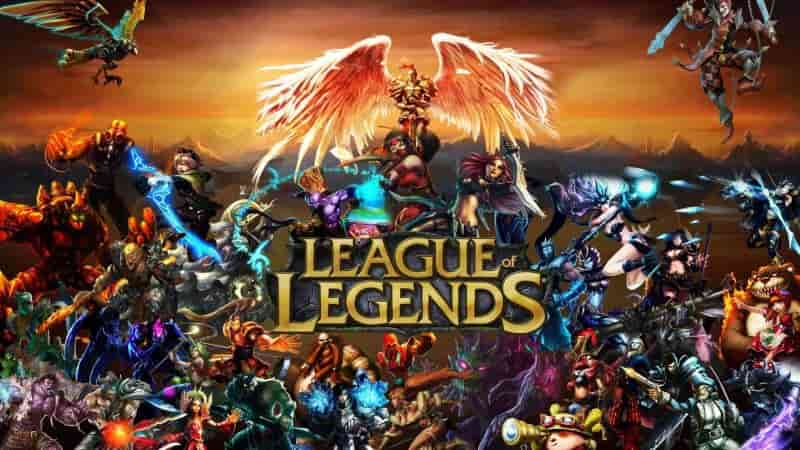
League of Legends (or League for short) is the most popular multiplayer online game in the world, and takes place in a 3-D battle arena setting involving role-playing and real-time strategy elements into its live environment. Players in League (also known as “summoners”) are matched up with others depending on their skill and game level so that everyone is placed into a competitive setting for a more enjoyable and challenging experience. In addition, users can also make “virtual” purchases within the game using the gold they collect in order to increase their character’s attributes, such as their various defenses, types of attacks, and magic skills. Furthermore, since League is available worldwide, players can form their own teams and then go on to compete against other teams from across the world.
League can be played on either a Windows-based or Apple computer. While the game is rated “T” for teens ages thirteen and older – describing a game to have intense violence, blood and gore, sexual content as well as strong language – League’s content description includes blood, fantasy violence, mild suggestive themes, and use of alcohol and tobacco. Although the suggested age to play is 13, the fact that it is free for anyone to download and use has opened it up to younger audiences as well.
As of September 2016, League has over 100 million monthly players and most of the game’s users are between the ages of 19 and 25 and male, as they make up 92% of the total online population. Interestingly, only 27 of the 1,500 12-17 year-olds we studied in our national data collection project from the summer of 2016 indicated that League was their favorite game. Perhaps it will gain traction among younger users in the coming months as it grows in overall popularity.
How People Play League of Legends
After downloading League onto their systems, players compete against each other in matches. At the same time, they are able to communicate through a text chat window (because teamwork and coordination of tactics is vital). That said, some players also use Skype or similar third-party Vo-IP (voice over Internet Protocol) software to connect with their friends and teammates outside of the game, but speak to them while playing through the use of microphones and headsets. A match in the game consists of two teams made up of “champions” that play against each other on various types of battlefields with the goal of destroying the other team’s “nexus” in order to win. This becomes a difficult task because the player must fight the opponent players as well as its minions while trying to travel to, and reach, the nexus.
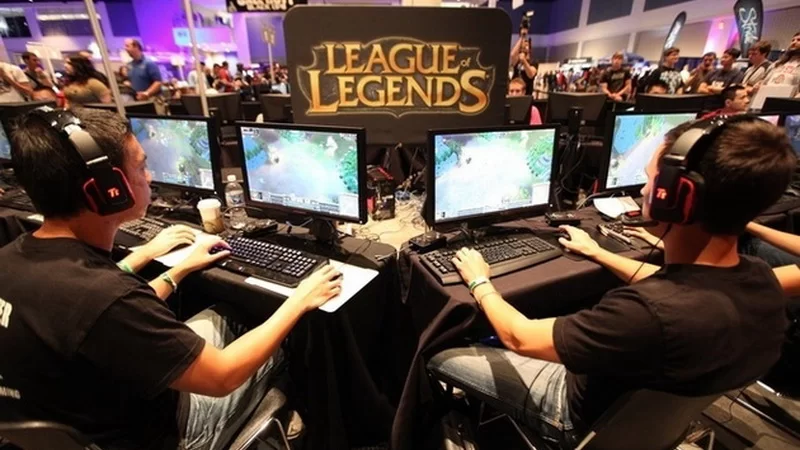 Why is League of Legends So Popular?
Why is League of Legends So Popular?
According to those who design video games, games must have certain mechanics, dynamics and aesthetics as its framework to make it popular, fun to play, and an enjoyable experience for users overall. The idea of aesthetics encompasses eight different elements – sensation (game as sense-pleasure), fantasy (game as make-believe), narrative (game as drama), challenge (game as obstacle course), fellowship (game as social framework), discovery (game as uncharted territory), expression (game as self-discovery) and submission (game as pastime) – which combine together to make a game entertaining and induce a desirable emotional response in a player while participating.
League, in particular, has achieved six out of eight aesthetic goals, which is part of the reason why it continues to be popular since its release in 2009. League has a fantasy element, where players are given the ability to choose from and control over 119 different mystical characters. It also has a challenge element, where players must compete against multiple others in order to advance to higher levels. Next, there is a fellowship aspect, where players must work together – which in turn allows them to create a social network among themselves. The discovery element allows players to compete in different worlds, and subsequently discover new worlds once they achieve certain experience levels within the game.
Interestingly, if a user has been playing the game for a long time, he or she has the ability to collect and use items that other players might not have access to – which tends to make battles more exciting, and fosters a desire in players to get better and put in increasing numbers of hours. Submission is the last element, whereby the game becomes a hobby, and this tends to occur once the player becomes familiar with all aspects of the game and subsequently knows what to do when playing it. League users also enjoy the expression of their own unique identity through their chosen playing style and character, which further enmeshes them in the gaming environment. It bears mentioning that League lacks the narrative and sensation aspects of aesthetics – although this is subject to debate.
Many players continue to rate League as one of their favorites when considering all of their games. This may be due to the different game modes provided by its developers – Riot Games – such as classic mode and dominion mode, which are also commonly used in other games like Call of Duty and Battlefield as well. League is also constantly adding new heroes, skins, and maps, which prevents players from growing bored and provides them with a plethora of new things to experiment with and explore. As players level up, they can unlock new items as well, which also helps keep them engaged and moving forward.
Players also enjoy the game’s ranking system, which increases the number and quality of competitions as they seek to increase their rankings. There is also a worldwide Champions List, where only the best of the best get to be ranked among many players across the planet. Of course, everyone wants to ascend that list, but very few even get close – and those that do typically get to demonstrate their skills on an international platform. The first competitive season took place in Sweden in 2011, where the best League teams from around the world gathered to compete for a $100,000 prize. Last year (2015), the world championship took place in Berlin on October 31st where 16 teams battled each other for a prize pool worth over $2 million. Further underscoring its rampant popularity is the fact that the most recent competition finals were watched by 36 million people overall, and parts of it by 14 million viewers concurrently on Twitch.tv. The 2016 League of Legends World Championship Finals was held in the Staples Center in Los Angeles on October 29, 2016.
Online Abuse in League of Legends
Even though it seems that the vast majority of League players are relatively respectful and engage positively with others, there will always be a small proportion which uses the platform to harass and mistreat others (like any other game, social media app, or interactive web site).
First, due to the fact that League is free to download, register and play, anyone can join in. This means that kids may be playing with older individuals, and the latter may give grief to the former who may be affected more readily than a self-confident adult. Indeed, the former may mistreat the latter due to their relative tendency to act in a juvenile manner. Also, the age gap presents differences in maturity that can lead to early exposure for younger players to adult-oriented themes and comments, which can increase all the more when younger players act childish and betray their age or maturity level. Users of any age may also lose their tempers from time to time, or be cruel to new or inexperienced players by calling them derogatory names.
While communication within the game setting is important since characters’ lives depend on their teammates and because each player’s actions affect the other players’ statistics, the text chat functionality can also increase cruelty toward other players. Typical examples of negative behavior that have occurred on League include: harassment, use of offensive and explicit language, verbal abuse in the form of offensive language that is directed at a particular player, refusing to communicate with the team, leaving the game halfway, intentionally dying (“feeding”) in order to make opponents stronger, and general negative attitudes that manifest in unproductive or destructive decisions.
The following screenshots depict a few examples of what we are talking about. are depictions of the behavior described above, where a harasser is telling a girl to kill herself. And, as if that is not harsh enough, yet another image depicts an aggressor telling another user to go cut their wrist, because no one likes them, and go “suicide off a bridge.”
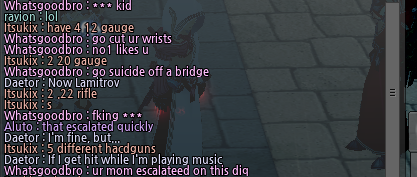
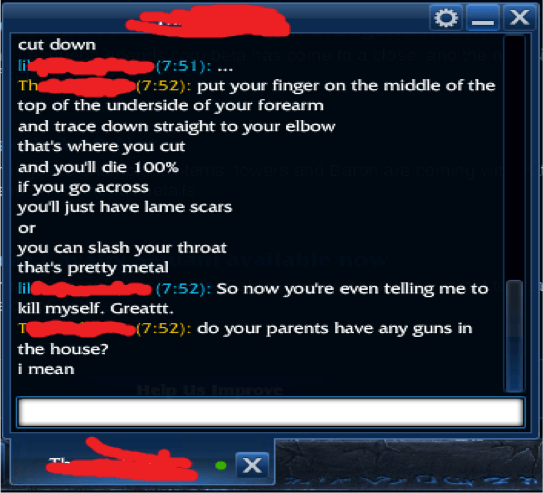
Hate speech is another form of harassment that sometimes takes place on League, and can be defined as that which “offends, threatens, or insults groups, based on race, color, religion, national origin, sexual orientation, disability, or other traits.” By way of example, two professional league players who were part of a European team and known for using aggressive language and hate speech were banned from playing the game for six months (and kicked off their teams as well) after making derogatory remarks such as “get cancer and die fucking trash jews, I will gass your famailies.”

Prior to that incident, another professional league player was banned from the game for an entire year after he failed to improve his behavior despite repeated punishments including regular temporary suspensions. To note, though, one of the most toxic players in the League community had a permanent ban lifted when Riot Games changed their guidelines to allow players the opportunity to rehabilitate themselves and correct their negative behaviors.
A final form of bullying deserving comment occurs outside the gameplay environment. In League, users have the ability to interact with each other via discussion forums. While at first this may seem like a positive feature, some choose to utilize it in the wrong way. In one particular instance, a junior member shared her story of how another player told her to commit suicide several times. Instead of offering sympathy or pointing her towards helpful resources, another user quickly and dogmatically told her to “stop being a ****ing emotional *****,” that “words do not hurt anyone,” and to take her “emotional ass to some other game.”



When bullied in League, targets seem to experience the same psychological, emotional, and even physiological consequences that bullying in other online venues tends to produce. Some players may try to defend themselves – but this often only incites the aggressors to increase the severity of their attacks. Many targets are deeply immersed in the game and simply don’t want to stop playing to extricate themselves from the noxious environment. Instead, they keep playing and often end up going “on tilt” – a phenomenon that many poker players have experienced. Specific to League, this is when a player internalizes the negative treatment received from someone else, acts emotionally instead of calmly and logically, and typically performs even worse – which of course incites further bullying and even hatred from the teammates. This can escalate rather quickly, and over a period of a 30-40 minute game the situation can evolve into a brutal and relentless manifestation of cyberbullying, especially as the attackers get more annoyed at the fact that they are losing the game largely because of the poor play of someone else.
Cyberbullying Prevention and Response in League of Legends
To begin, Riot Games has created a Summoner’s Code, which “serves a blueprint for positive behavior on and off the Fields of Justice…[and encourages you to] play as a team, provide constructive feedback, build relationships and help new players.” They present this at the very start of a person’s interest in League, and I think it sets the proper tone and tries to get everyone to participate in a “social contract” of appropriate behavior in the game. They also encourage reporting of Code violators, and attempt to marshal peer pressure to induce compliance by respectful rules of engagement.
In the past, League used a Tribunal – or a community-based court system – whereby defendant players who had a large number of complaints against them (in the form of reports issued during the post-battle screen) would go before other players who would vote to pardon or punish them for any of their alleged negative behavior. However, those very reports were also being used to be mean or cruel towards others. For example, one report option is for an “unskilled player”, which many times will be issued to a cyberbullying target after he/she has gone on tilt and played very poorly. This can further increase the emotional distress of the individual, especially since the thought of your account being punished by the Tribunal can be very discouraging, particularly if you have many hours and maybe even some cash invested into your account. Also, it is entirely possible to report players without any real cause, though these reports will almost always have no effect and will not even come to the attention of the accused.


Luckily, Riot Games has acknowledged that cyberbullying remains a problem and has developed a new system whereby the game can quickly punish players for negative behavior. Once a player is reported for being verbally abusive, the system will examine the case and decide whether the player should be punished for their specific actions. In addition, the system will send an email to the player containing a reform card that includes a chat log with the offending messages, and will also notify the player of the length of their punishment – should their behavior warrant any. This can occur anytime between 15 minutes after the player’s match has ended all the way up to two weeks later.
Moreover, Riot Games has reported that they will be making future improvements to their feedback system such as providing follow-up notifications for those who report toxic players, in-client reform cards, upgrades for chat and ranked restrictions, upgrades to recognize negative gameplay behaviors like intentional feeding, and even some form of recognition of honors for those who demonstrate positive behavior and communication. As one example, the game has a “leaver buster” system, which has the ability to detect players who refuse to actively participate in matches – as well as those players who frequently quit in the middle of matches – which leaves their team at a marked disadvantage during that battle round. As a result of such behavior, the system also allows for these players to face the potential consequence of being banned in order to prevent them from disrupting further games. It should be noted, though, that if a user is punished or banned, there is no way to stop that person from simply creating a new free account and continuing bullying the League community.
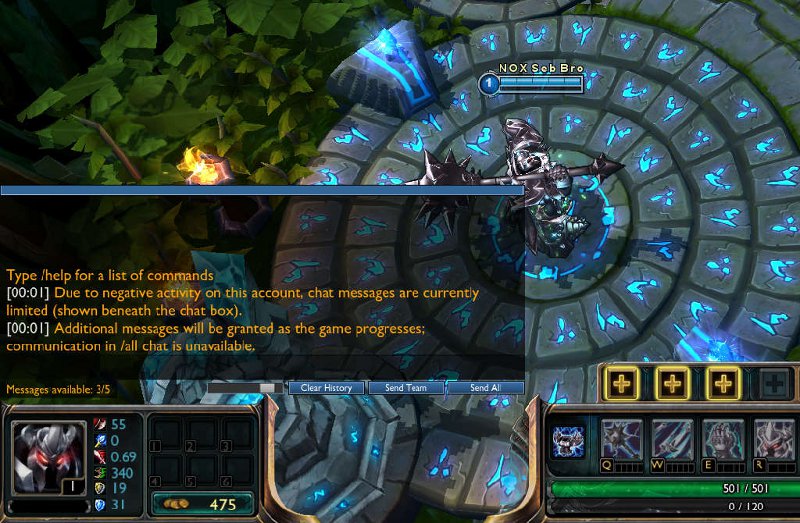
In my opinion, the coolest thing that League has done – and which has important implications for curbing online abuse across other major online platforms and social media sites – is applying machine learning to a humongous corpus of user-created and generated content. Specifically, they analyzed over 100 million tribunal votes (and the game data and chat logs involved), and now continually analyze and learn from “reports” and “honors” to define and shape “acceptable behavior” and consequently deliver penalties or incentives to players. Jeffrey Lin, the previous lead game designer of social systems at Riot, states that “incidences of homophobia, sexism and racism in League of Legends have fallen to a combined 2 percent of all games [while] verbal abuse has dropped by more than 40 percent, and 91.6 percent of negative players change their act and never commit another offense after just one reported penalty.”
Another tactic that League employs in order to limit users’ exposure to negative experiences caused by toxic players is by providing specific features in the game, such as typing mute “Summoner name” and ignore “Summoner name,” which block messages from that specific Summoner (player). There is also a section to modify chat preferences so that players filter out inappropriate language. If, however, the filter is insufficient for their needs, Riot Games recommends that that a formal report be filed.
Finally, Riot Games offers rewards for players who refrain from cyberbullying, or have not received chat bans or other bans during a given period of time. In such cases, players are eligible to receive prizes, which are distributed randomly so that no one can calculate when exactly they must behave properly. These prizes come in the form of mystery gifts, and Riot’s goal in doing so is to incentivize sportsmanlike conduct, as well as to motivate users towards always acting appropriately because of the possible in-game benefits that can befall them.
Although cyberbullying continues to remain an ever-present issue in multiplayer online games, the developers of League of Legends are continuously coming up with ways to decrease harassment and meanness among its userbase. Some have been more beneficial than others, but Riot’s overall efforts merit commendation as they persistently seek to determine what works and refine their policies and software accordingly. While these measures cannot completely prevent cyberbullying from ever occurring, they empower targets to protect themselves, attempt to informally and formally deter those who are inclined towards cruelty, and provide rewards for good citizens in the League community. With these and other strategies that will be implemented in the future, players should be able to enjoy more productive and fun gaming experiences in League and beyond.

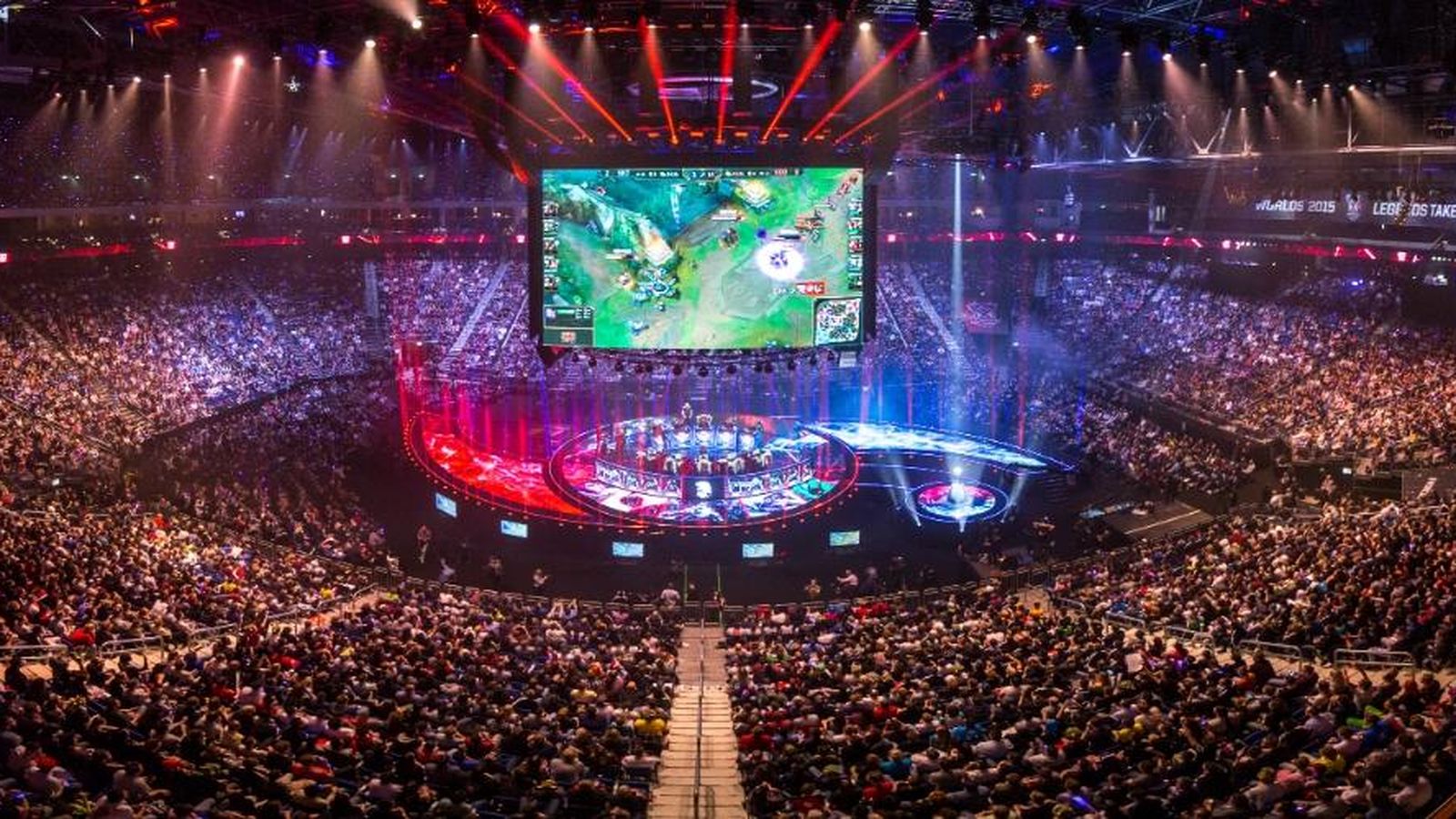







To avoid this scenario, you can already filter the chat box in LoL, though there's a problem in turning it off again. Also, there is a rating system after each game so you can report the player on his behavior.
Thanks for weighing in and sharing your tip, Carolette! Much appreciated!